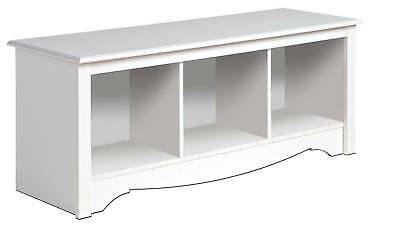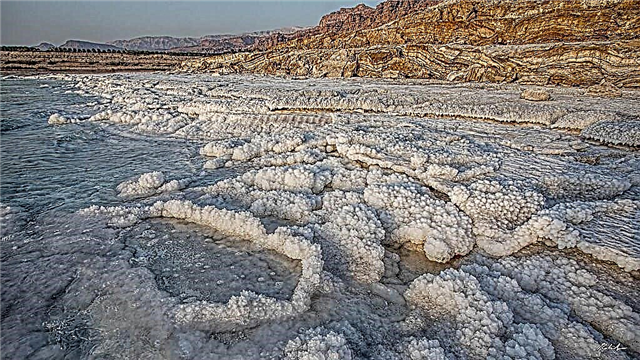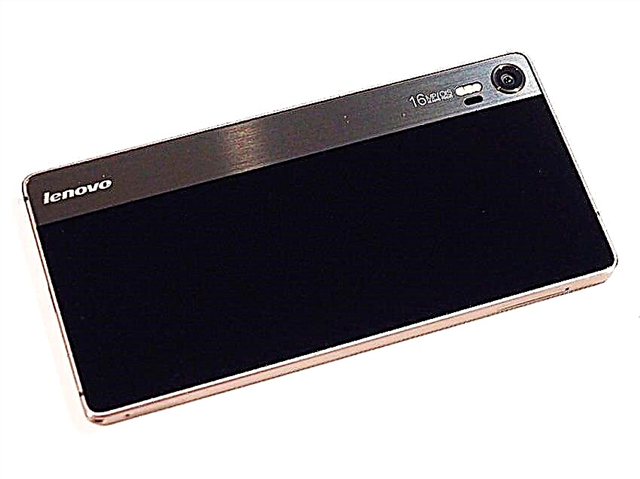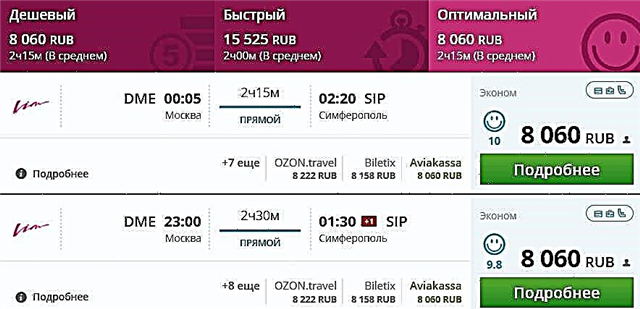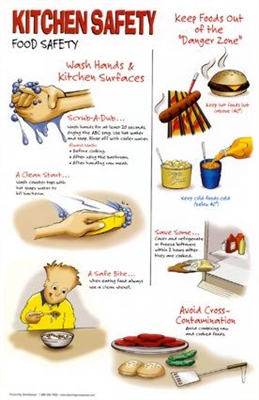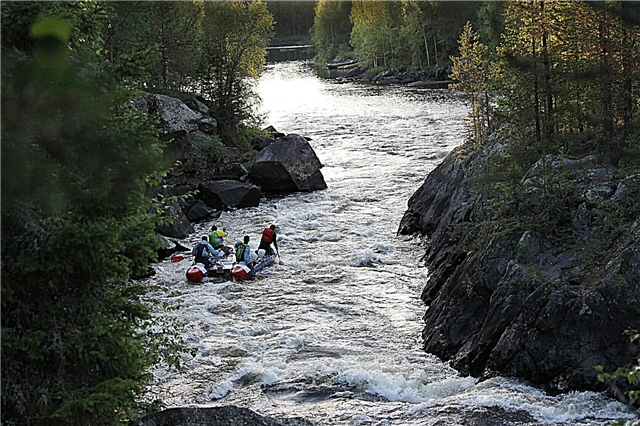How to sunbathe beautifully and correctly at sea? We will tell you how to choose a sunscreen, how much time to spend in the sun, how to prepare your skin for tanning and what to do in case of a burn - you can get sunburned even on a cloudy day!
We are always looking forward to summer, and one of the reasons is sunbathing, the opportunity to bask in the sun and get a beautiful tan. Now, many can afford to rest in hot countries at any time of the year, which means that the risks associated with prolonged exposure to the sun also increase.
It is scientifically proven that sun exposure is more harmful than good, so don't ignore the rules of safe tanning. We will talk about this in the article.
What is a tan
Sunburn is the darkening of skin color due to prolonged exposure to the sun. Under the influence of sunlight, the pigment melanin is produced - it gives it a dark shade. If in the first exposure to the sun it develops too much, then in the following days you will no longer darken to the shade you need.
Ultra-violet rays
UVA rays the longest and can penetrate glass and clouds. They do not leave burns, but they are still dangerous. They cause an allergic reaction, provoke skin diseases and a decrease in immunity. It is these rays that are used in tanning lamps.
UVB rays shorter and more active in summer. It is from them that the skin turns red, and you get burns. The consequences of such irradiation are mass: premature aging, and destruction of skin cells, and deterioration of the state of blood vessels, and the risk of developing melanoma - a malignant tumor. Pigmented spots can generally appear after a couple of years. They do not penetrate clouds, clouds and glass.
Short UVC rays do not reach the Earth - they are absorbed by the atmosphere.

The benefits of sunburn
Ultraviolet light raises levels of the hormone serotonin, which boosts your energy and lifts your mood. Not only because you are on vacation by the sea - the improvement in the state of the body really happens from the inside. The sun promotes the production of vitamin D in the body, and it is responsible for strong healthy teeth and nails, and improves immunity. Sunburn also has an aesthetic component - many people think that pale skin looks painful and less attractive.
Sun activity level map in different countries
How to sunbathe in the sun
Solarium in front of the sea
Before a vacation, many people are concerned about the question of whether it is necessary to go to a solarium in order to prepare for a trip to the sea.
A small dose of ultraviolet light will be useful before vacation. So you will avoid burns and immediately a large dose of ultraviolet radiation. This is especially true for residents of those latitudes where there is little of it, and the gray winter months are much more than three. Sunbathe evenly from all sides in the solarium - and the sun will lie evenly on the sea. Do not overdo it! Artificial irradiation is strong and a lot of melanin is produced. After such a "sun" beach tanning just won't stick to you. If you bought a last-minute ticket and you have a couple of days before your vacation, 1-2 trips to the salon will definitely benefit you.
Danger. Tanning beds are unsafe due to UVA rays. Even when using sunscreen, the effect of the rays is not reduced - creams simply do not protect against this type of radiation. Oncologists are not against artificial ultraviolet radiation in moderation! Residents of northern areas need it "for mood" and pumping up with vitamin D.

How much and when to sunbathe
The main rule is to tan gradually! In different countries, depending on the proximity to the equator and the time of year, tanning will be of different colors and it will also be different for you.
Here is a diagram of how to properly sunbathe at sea. On the first day, spend no more than half an hour in the sun - 10-15 minutes before lunch and the same after. Increase the time by 10-15 minutes every day. But even at the end of the vacation, there is no point in sunbathing for more than 2-3 hours. The production of melanin by the skin no longer occurs - you will no longer tan.
When is the best time to sunbathe? It is ideal to stay in the sun before 11 and after 16 hours. During the day, the sun is very active and will do more harm than good.

Where is better to sunbathe
Doctors agree that it is ideal to sunbathe in the shade. In the first week of your vacation, being in direct sunlight is undesirable. Through the clouds, the tan will lie softer and last longer.
The water reflects the sun's rays, so you burn faster on the shore. The same goes for snow! It reflects the sun just as well, so the possibility of getting sunburned in winter is not a myth at all.

After sun care
From prolonged exposure to sunlight, the skin is overdried and the dead layer of the epidermis begins to slough off. There is no particular harm, but it is unpleasant. The most important care is moisturizing, as well as avoiding scrubs and hard washcloths in the early days.
How to get a beautiful and even tan
Sunscreen and other products
How beautiful is it to sunbathe at the sea? It is important to choose the right sunscreen to avoid burns. The most popular types of products: cream, milk, spray, stick. Let's consider each of them.
- Cream Is the most popular form. Creams have a dense texture, which is good for dry skin, but not for oily skin. It is applied poorly, absorbed for a long time, leaving those very white streaks, but can be used as a base for makeup.
- Fluid - light cream. Ideal for oily skin because it absorbs faster and has a lighter texture.
- Milk Is the most common type of body protectant. Sometimes there are 2 in 1 - suitable for the body and face.
- Cosmetic oil rarely has a degree of protection higher than SPF 15–20, since its main task is to give the skin the maximum chocolate shade without damaging it. To make the effect even more noticeable, glitter, bronzer and other visual tanning enhancers are added to the oil.
- Spray it is convenient for application on the back and shoulder blades, but it is very difficult to evenly distribute it. You can get burned in places where it is not enough. Plus face sprays - they can be applied over makeup.
- Stick - a small but handy thing. It looks like a tube of chapstick. Suitable for small areas of skin - lips, ears, nose. Ears and lips burn in the sun no less than the neck or back, and the skin slides off just as painfully.
The products do not affect the speed of tanning, they only increase the safe time spent in the sun.
The best tanning products. Advice and feedback
What does SPF stand for
Abbreviation SPF (Sun Protection Factor) translated as "sun protection factor", and the figure indicates the degree of protection - the higher, the more it is. Almost any sunscreen only protects against UVB radiation.
You also need a different cream: in the first week, use a cream with SPF 50, then with SPF 30, and after two weeks you can use SPF 15.
- SPF 50 - the skin will receive only 1/50 of the total amount of sun rays - this is 2%. Protects from 98% of UV radiation.
- SPF 30 - protects against 97% of the rays, that is, it will let through 1/30 of the radiation.
- SPF 25 - gives a protection level of 96%.
- SPF 15 - from 93%.
There are creams with an SPF indicator of 70, 80 and even 100. You should not believe such figures, because 98% of the rays are the maximum from which the cream can protect.

How to choose sunscreen
In addition to the abbreviation SPF, you can find the following designations:
- UVA - the tool blocks the rays of type A (the most dangerous). In Asian countries, it is indicated by the PA ++ index (there can be up to four pluses).
- PPD (Persistent Pigment Darkening) - the degree of protection against UVA rays. The maximum degree is 42, but 8 will be enough.
- Broad spectrum - the cream protects against rays of types A and B.
The components that should be contained in the cream are at least vitamins C and E. Green tea extract and resveratrol will also be a good addition to the composition.
Previously, sunscreens were produced only for adults, maximum - for children from three years old. Now you can find creams for babies from six months to three years old.

The cream is needed not only in summer
For residents of countries with high sun activity, protection is needed all year round. In Russia, in autumn and at the beginning of winter there is no point in it - there is almost no sun. And in winter, on clear frosty days, you really need to use the cream! In the spring, the sun is already becoming more active, and the cream will be very useful to you. It is not for nothing that they say that they burn most of all in late spring - the skin is not yet accustomed to the sun, and the radiation activity, on the contrary, is very high.
Choosing a cream by skin type
Choosing the right sunscreen is important. If you know your skin type, then it's simple: look for a cream for dry, oily or sensitive skin. If not, see the composition of the cream:
- dry skin needs maximum moisture, it will be given by aloe, glycerin, hyaluronic acid;
- oily skin needs a cream with minerals and the inscription "non-comedogenic".

Phototype
There are only six of them. The first two are the most vulnerable. They need products with SPF 50 protection, the rest will need SPF 20-30. How to determine the phototype?
- I, Celtic: fair skin, blonde or red hair, fair eyes, freckles. It is better for such people not to sunbathe at all, because they instantly burn out.
- II, fair-skinned European: blonde hair and eyes, fair skin, sometimes freckles. You can tan, but with difficulty.
- III, Central European: dark blond, brown hair, gray or light brown eyes, these people are quite dark, but it is still easy to get sunburned in the sun. Tanning on this type of skin lays down normally.
- IV, Mediterranean: dark hair, brown eyes, olive skin. They tan well and quickly.
- V, Asian: very dark hair and eyes, brown or yellowish skin. They get burned very rarely.
- VI, African: black hair and eyes, dark skin. Such people do not burn at all (but this does not mean that they do not need sun protection).

How to use funds
- Apply sunscreen 20 minutes before sun exposure. So it manages to absorb and protect the deep layers of the skin. It is ideal to generally apply the cream in two layers. The second - after the first is completely dry.
- You need to renew the cream every two hours or follow the instructions for it. For example, many creams need to be renewed after every bath.
- Contrary to popular belief, there is no strong difference between protection factors 15 and 50.
- How much cream should I apply? In simple terms: about a quarter of a teaspoon for the face and a tablespoon for each part of the body.
- It is also important to wash off the cream after sun exposure, otherwise you may get an allergic reaction.

Tanning myths
- Glass and clouds protect from sunlight. No, glass acts like a sunscreen, not all rays are retained (it does not UVA). Therefore, it is quite possible to get burned while sitting by the window on the bus! The same applies to clouds: getting sunburned on a cloudy day is even easier, because we lose our vigilance.
- Vitamin D can only be obtained through tanning. No, it is found in many foods. For example, eggs, dairy products and fish.
- The sun heals the skin of the face. No, it can only dry out the skin a little, but you will not achieve a full-fledged treatment for, say, acne.
- In windy weather, the skin does not burn. In fact, windy, cool weather is just as dangerous, despite the absence of sweltering heat. A chapped face burns even faster as the skin suffers from cold gusts.
- Makeup base can protect against burns. Can. But it will have to be applied in at least 7 layers to get the protection factor indicated on the package.
10 myths about sun and tanning
What to do with sunburn
What to do if you get a sunburn? I share my own experience.
- Drink plenty of water to restore balance. Drink milk and fermented milk products, apply kefir and sour cream on burnt skin.
- Take pills for allergies: Loratadin, Suprastin, Diazolin according to the instructions. What for? Saves from edema if the face burns out.
- Apply Panthenol, Boro +, and a protective cream before going outside;
- Exercise a lot - for oxygen exchange and to reduce swelling.
And, of course, it is important to keep sun exposure to a minimum, ideally not to be outside. I was saved by three days of travel by car, there was almost nowhere to go, and by the time I returned home the burns were almost gone.

